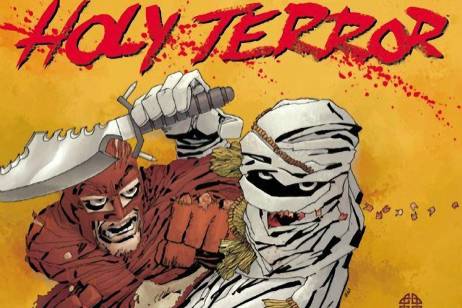 There is nothing subtle about Frank Miller’s newest graphic novel, Holy Terror. The book opens with the quote: “If you meet the infidel, kill the infidel”, which Mr Miller attributes to the Prophet. From there the jingoism, violence and Islamophobia take off.
There is nothing subtle about Frank Miller’s newest graphic novel, Holy Terror. The book opens with the quote: “If you meet the infidel, kill the infidel”, which Mr Miller attributes to the Prophet. From there the jingoism, violence and Islamophobia take off.
Miller is no stranger to controversy. His stories, which include the famous Batman mini-series, The Dark Knight Returns, and comics-to-film 300 and Sin City, regularly explore the darker corners of society amid shades of moral grey. Any nuance, however, is all but absent in his latest work.
Originally envisioned as a Batman tale after September 11 attacks on the US, the comic features heroes The Fixer, and thief-come-love interest, Natalie, as they join forces to stop an Al Qaeda plot on Empire City, a thinly veiled New York City.
For some, the best-seller underlines a worrying shift in American entertainment. “We are witnessing a growing industry of information and fear-mongering, and this work fits in the centre … It’s unfortunate that Islamophobia is becoming mainstream,” said Nihad Awad, the executive director of the Council on American-Islamic Relations, a Washington-based Muslim civil-rights group. He described the work as “shameful”.
Certainly, Miller’s mixing of Muslims and Arabs – the book never differentiates – with terrorists highlights Holy Terror‘s unflattering portrayal of Muslims.
Jack Shaheen, a professor of mass communications at Southern Illinois University, said this combining is a “common thread” in post-September 11 media, and that Holy Terror warrants attention by rights groups as comics grow in influence within the American entertainment industry.
After the book’s initial fight scene, The Fixer says to a captured terrorist: “So Mohammed, pardon me for guessing your name, but you’ve got to admit the odds are pretty good it’s Mohammad…” The Fixer then tortures and cripples the man before detonating his explosive belt.
Miller’s depictions of women in Islam were no better. A two-panel spread that juxtaposes westerners and Muslims/Arabs shows one of the comic’s most gratuitous scenes. In stark contrast to westerners at a cinema in the first panel, the second depicts a brutalised woman buried to her neck as silhouetted men stone her while yelling insults.
